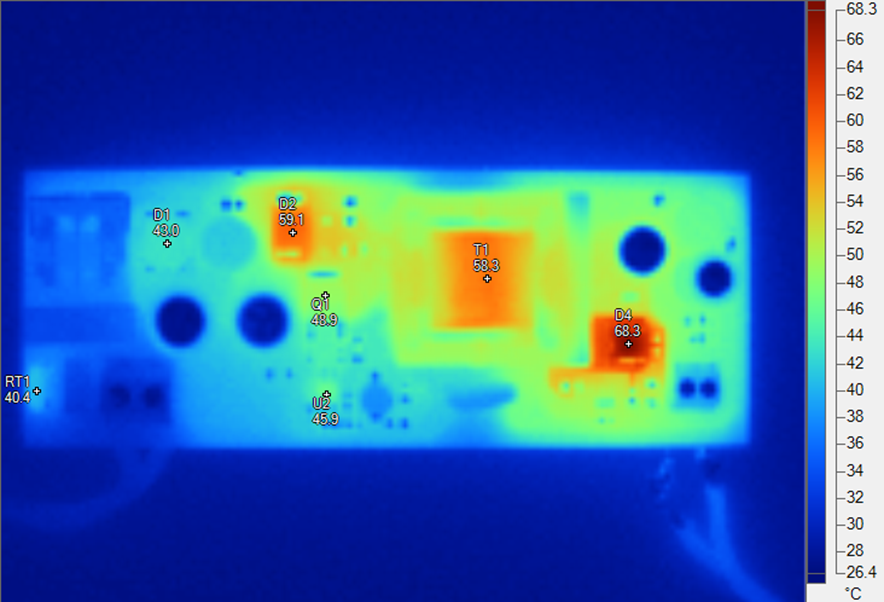TIDT339 june 2023
2.2 Thermal Images
Figure 2-4 and Table 2-4 show the thermal picture of the converter supplied at 230 VAC and 50 Hz, taken after 30 minutes soak time, at 25.5°C ambient temperature, and placed horizontally to the bench.
The board runs at 1.7 A under still air conditions.
 Figure 2-4 Thermal Image
Figure 2-4 Thermal ImageTable 2-4 Main Image Markers
| Name | Temperature | Emissivity | Background |
|---|---|---|---|
| D2 | 59.1°C | 0.96 | 25.5°C |
| D1 | 43.0°C | 0.96 | 25.5°C |
| RT1 | 40.4°C | 0.96 | 25.5°C |
| U2 | 45.9°C | 0.96 | 25.5°C |
| Q1 | 48.9°C | 0.96 | 25.5°C |
| T1 | 58.3°C | 0.96 | 25.5°C |
| D4 | 68.3°C | 0.96 | 25.5°C |